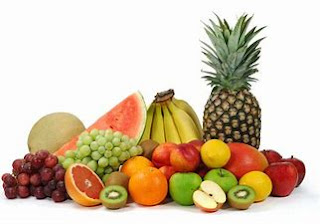Healthy Living Tool Kit for Ladies & Gentlemen
Healthy Living for Ladies & Gentlemen
So what is a Healthy & balanced diet?
Top doctors & dieticians of the world recommend a variety of healthy foods each day. This includes eating plant-based foods more frequently and highly processed or ultra-processed foods less often.
A healthy diet Consist of:
1. Eating lots of vegetables and fruits, are one of the most important diet habits. Vegetables and fruit are packed with nutrients (antioxidants, vitamins, minerals, and fiber) and help you maintain a healthy weight by keeping you full longer. Fill half your plate with vegetables and fruit at every meal.
2. Choosing whole-grain foods, whole-grain foods include whole-grain Bread and Parathas, brown rice, quinoa(Dalia), Oatmeal, and Barley(Bhusi or Choker). They are prepared using the entire grain. Whole-grain foods have fiber, protein, and B vitamins to help you stay healthy and full of life. Choose whole-grain options instead of processed or refined grains like White Bread and Pasta. Fill a quarter of your plate with whole-grain foods.
3. Eating protein foods include legumes(Peas, Beans, etc), Nuts, Seeds, Tofu, fortified soy beverage, fish, eggs, Poultry, Red meats, low-fat milk, low-fat yogurts, lower fat kefir(A fermented milk drink or Chaach) and cheeses lower in fat and sodium.
Dairy products are a rich source of protein. Choose lower-fat, without flavored or scented options. Fill a quarter of your plate with protein foods.
4. Limiting highly processed foods. Highly processed foods are foods that are changed from their original food source and have many added ingredients. During processing, often important nutrients such as vitamins, minerals, and fiber are removed while salt and sugar are added.
Examples of processed food include Fast foods, Hot dogs, Chips, Cookies, Frozen Pizzas, meats, white rice, and white pieces of bread. Some minimally processed foods are okay. These foods are slightly changed in some way but contain few manufactured or industrially made additives. Minimally processed foods keep almost all of their essential nutrients.
Some examples are bagged salad, frozen vegetables and fruit, Eggs, Milk, cheese, flour, brown rice, oil, and dried herbs. We are not referring to these minimally processed foods we are advising you not to eat processed foods. Researchers found that ultra-processed foods are the favorite of both the Young and Old generations equally.
5. Making water your drink of choice:
Water supports health and promotes hydration without adding calories to the diet. Sugary drinks including energy drinks, fruit drinks,100% fruit juice, soft drinks, and flavored coffees have lots of sugar and little to no nutritional value. It is easy to drink empty calories without realizing it, and this leads to weight gain. Fruit juice has some of the benefits of the fruit (vitamins, minerals), Fruit juice should be consumed and fruits also. We should eat fruits on an empty stomach.
Top 5 tips from the experts:
Prepare most of your meals at home using whole or minimally processed foods. Choose from a variety of different proteins to keep things interesting.
Using catchy names for each day can help you plan, more “Meatless Monday” with this meatless recipe, make an eating plan each week – this is the key to fast, easy meal preparation.
Check out our shopping tips here:
Choose recipes with plenty of vegetables and fruit. Your goal is to fill half your plate with vegetables and fruit at every meal. Choose brightly colored fruits and vegetables each day, especially orange and dark green vegetables. Frozen or canned unsweetened fruits and vegetables are not the perfect alternative to fresh produce.
Try this, avoid sugary drinks and instead drink water. Low-fat, unsweetened milk is also a good way to stay hydrated. Keep a reusable water bottle in your Bag or Vehicles so you can fill it up wherever you are going out.
Eat smaller meals more often. Eat at least three meals a day with snacks in between. When you wait too long to eat you are more likely to make unhealthy food choices.
Keep easy-to-eat snacks in your bag for emergencies.










Comments
Post a Comment